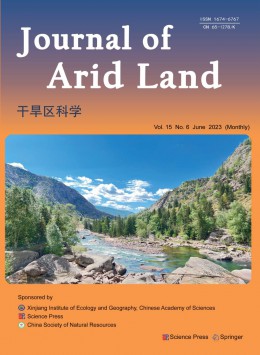如何縮短《Journal of Arid Land》雜志的審稿周期?
來源:優發表網整理 2025-09-25 17:48:12 2449人看過
想要縮短《Journal of Arid Land》雜志的審稿周期需要作者、編輯部和審稿人等多方面的共同努力,作者可以采取一些有效措施,間接地加快審稿進度,提升稿件的處理效率。
建議如下:
一、提高論文質量
(1)嚴格遵循投稿要求:在投稿前,仔細閱讀《Journal of Arid Land》雜志的投稿指南,包括格式要求、字數限制、參考文獻格式等。確保稿件符合雜志的規范,避免因格式問題被退回修改,從而耽誤時間。
(2)提高論文質量:確保論文的研究內容具有創新性和學術價值,數據準確,論證嚴謹,語言表達清晰流暢。高質量的稿件更容易通過初審,進入同行評審階段。
二、選擇合適的投稿時機
(1)關注期刊審稿周期:在投稿前,了解《Journal of Arid Land》雜志的審稿周期(預計1-3個月)和發表周期(雙月刊),以便合理安排投稿時間。
(2)關注期刊動態:了解期刊的專題征稿或熱點話題,針對性地投稿,可能獲得優先處理。
三、與編輯部保持良好溝通
(1)主動了解審稿進度:如果超過預計的審稿時間仍未收到回復,可以禮貌地向編輯部發送郵件,詢問稿件的審稿進度。
(2)尊重審稿意見:認真對待審稿意見,積極修改論文中的不足之處,共同探討論文的改進方向。
需要注意的是,縮短審稿周期的前提是保證稿件的質量,不能為了追求速度而犧牲學術嚴謹性。
《Journal of Arid Land》雜志創刊于2009年,是由中國科學院主管、中國科學院新疆生態與地理研究所;科學出版社主辦的學術理論雙月刊。國內刊號CN:65-1278/K,國際刊號ISSN:1674-6767。該雜志以推動歷史改革與發展、探索歷史規律為宗旨,致力于為歷史工作者、研究者和管理者提供一個學術交流的平臺。
《Journal of Arid Land》雜志投稿建議:
Keywords: Immediately after the abstract, provide 3 to 7 keywords, closely related to the subject of the article. Avoid general and plural terms and multiple concepts (e.g., 'and', 'of').
Introduction: Provide an adequate background. State the significance, objective and method of the research, citing necessary references, especially references of work published in the last two to three years.
Study area/materials and methods: Introducing a general idea of the study area or experimental setting, the materials and methods used and the basic progress of the study. Provide sufficient detail to allow the work to be reproduced or substantiated.
Methods already published should be indicated by a reference.
Results: Relating the findings and results of the observation(s) and experiment(s) without interpreting their meaning. Results should be clear and concise.
Discussion: Explaining all of your observations within your experiment(s). Exploring the significance of the results, but do not repeat them in the text. Stating whether each of your hypotheses are supported, rejected or if you cannot make a decision with confidence, and suggesting future studies or modifications to the same study.
Conclusions: Presenting main conclusions of the study that may stand alone or creating a discussion subsection.
Acknowledgements: Acknowledgements should include, if applicable, information on grants received, funding organizations, and/or recognition of people who assisted in the research or article.
References: Please cite a reference to acknowledge sources of information from others’ research and results. Ensure that
every reference cited in the text is also present in the reference list. Citation guidelines are as follows: as (Smith, 1998) for single author, as (Smith and Miller, 1999) for two authors, and as (Smith et al., 2006) for three or more authors. Groups of references should be listed first chronologically, then alphabetically. In the reference list, references should be arranged first alphabetically, then chronologically, if necessary. More than one reference from the same author(s) in the same year must be identified by the letters "a", "b", "c", etc., placed after the year of publication. Journal names should not be abbreviated.
Reference examples:
Articles: Ames R N, Reid C P P, Porter L K, et al. 1983. Hyphal uptake and transport of nitrogen from two 15N-labelled
sources by Glomus misseae, a vesicular-arbuscular mycorrhizal fungus. New Phytologist, 95(3): 381?396.
Monograph: Lambers H, Stuart Chapin ΙΙΙ F, Pons T L. 2008. Plant Physiological Ecology. 2nd ed. New York: Springer Science+Business Media, 56?64.
Proceedings: Bernstein N, Kafkafi U. 2002. Root growth under salinity stress. In: Waisel Y, Eshel A, Kafkafi U. Plant Roots,
the Hidden Half. New York: Marcel Dekker Press, 787?805.
Electronic reference: UNESCO World Heritage Centre. 2008. Operational Guidelines for the Implementation of the World
Heritage Convention. Paris: UNESCO World Heritage Centre. [2009-11-17].
聲明:以上內容來源于互聯網公開資料,如有不準確之處,請聯系我們進行修改。
